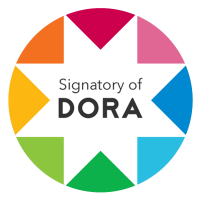CLASSROOMS AND COMPANIES: AN ANALYSIS OF TEACHING CASE PRODUCTI ON AND USE IN BUSINESS ADMINISTRATI ON COURSES
DOI:
https://doi.org/10.13058/raep.2014.v15n1.41Keywords:
case study, teaching cases, business administrationAbstract
The case method is considered a promising educational tool to bridge the gap between the classroom and companies, where students enjoy active participation in the learning process. However, little is known about how teachers and students use teaching cases. This paper has thus sought to research the teaching cases published in Brazil and identify how teachers have employed this tool. Data was collected through an analysis of 48 teaching cases published in business administration journals and conferences, in addition to a qualitative study with 61 teachers from three Minas Gerais State heis. The results show that, although an effort to construct cases is being undertaken by Brazilian researchers with recently published cases, this production has not been used by teachers in the institutions surveyed, due to their
overlooking event proceedings and journals as potential sources of cases. The main conclusion reached is that teachers lack the proper knowledge of what constitutes a case and how it should be employed.
Downloads
Downloads
Published
How to Cite
Issue
Section
License
By publishing a manuscript in the journal Administração: Ensino e Pesquisa (RAEP), the authors declare that the work is of their exclusive authorship and therefore assume full responsibility for its content. The authors grant RAEP a non-exclusive rights license to use the work in the following ways:
(1) Sell and / or distribute the work in hard copies or electronic format.
(2) Distribute parts of the work as a whole to promote the journal through the internet and other digital and printed media.
(3) Record and reproduce the work in any format, including digital media.
Authors and readers are permitted to share the material, use it in classes, for presentations and also for other purposes, and to create new knowledge based on any RAEP publication, as long as the due credit is attributed to the original work and the respective author(s), through citations, references, and other means.
The journal adopts preventive measures to identify plagiarism using software designed for this purpose.
RAEP does not charge authors for the article submission nor for the publishing of approved articles.
In line with the journal's policies, each published article will be given a Creative Commons CC-BY 4.0 license.










